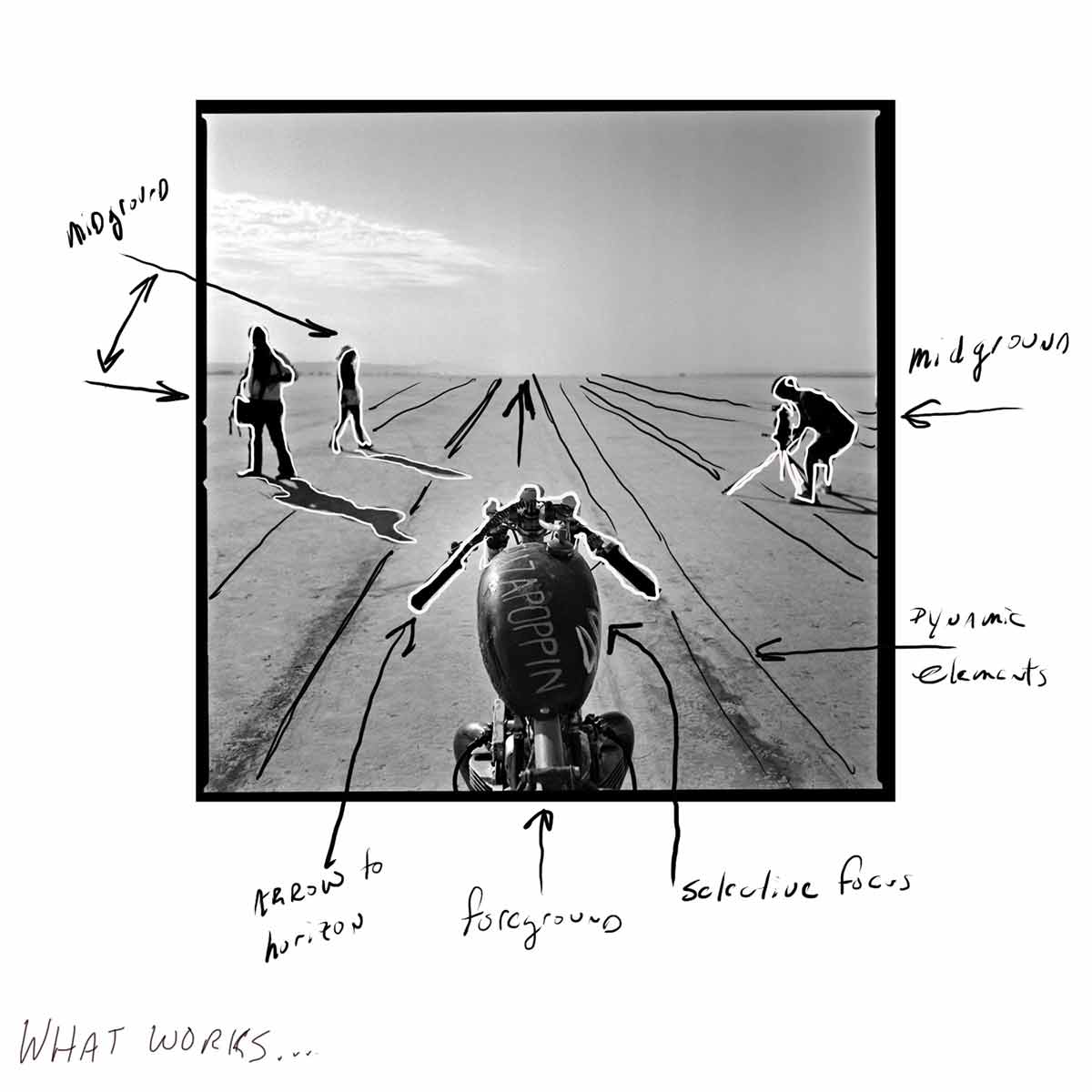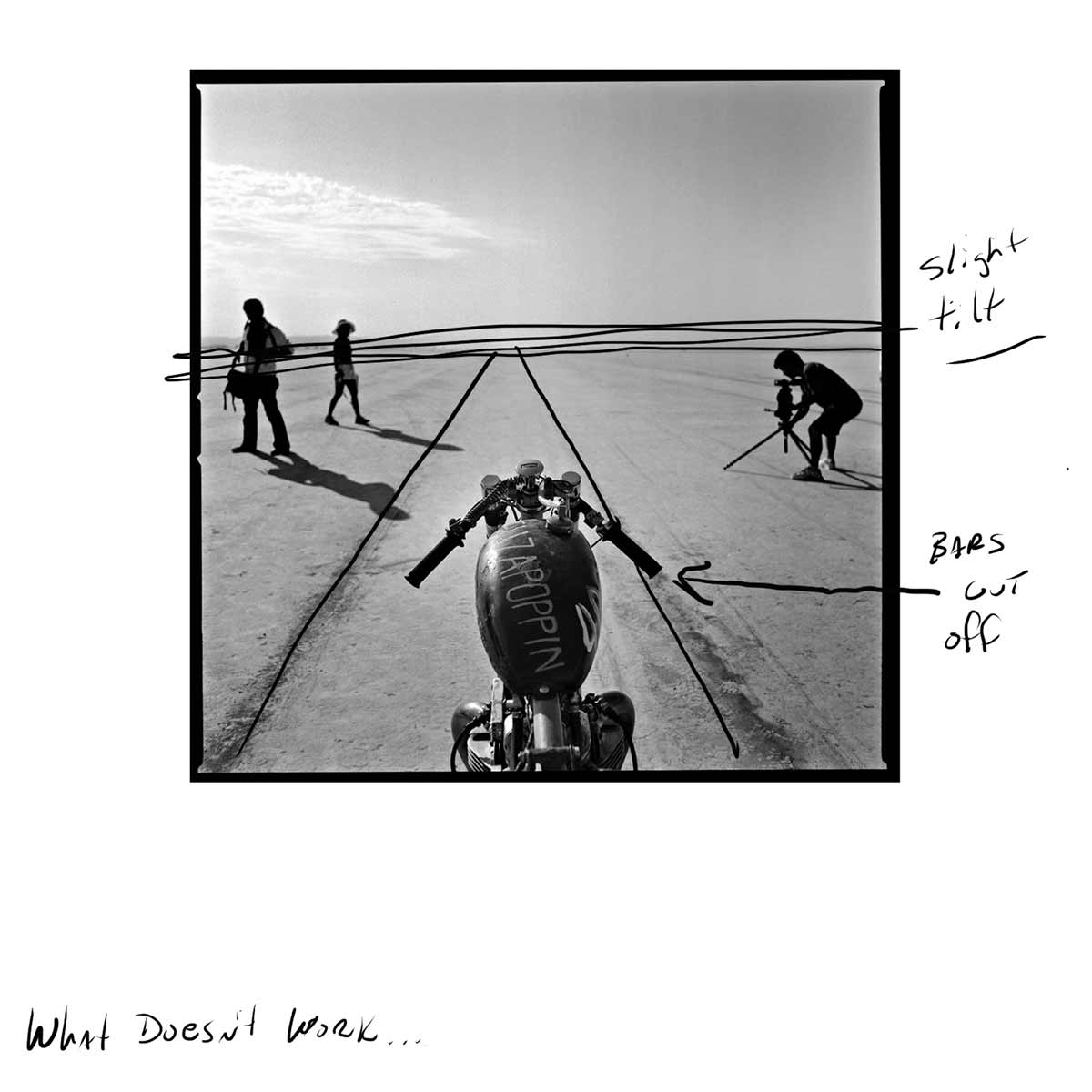Daniel Milnor: Notes on Photography │California
Notes on Photography is a blog series all about images. Each month, Daniel Milnor will revisit an old photograph and share his notes on what works within each shot, what he would do differently, and why.
Image 3:
El Mirage, California

If you’ve seen a car commercial in the last twenty years, then you’ve most likely seen El Mirage Dry Lake near Los Angeles. El Mirage is a very strange place. Dry, yes. Cracked, yes. I’ve seen people camping in black tents in the middle of the summer, and I’ve seen movie shoots with fake plane crashes in the background. When I lived in Los Angeles, I would pack up my Honda TransAlp motorcycle, and my 4×5 Polaroid, and venture out there to see what I could see.
El Mirage is also home to the Southern California Timing Association, which is code for people who want to drive really, really fast in a straight line—a very welcoming and interesting group. Dedicated, crazed, and bent on finding the point of no return. The range of vehicles is wide—cars, trucks, bikes, and rockets with wheels that can hit 300mph. A sight to see, without a doubt. I’ve attended their semi-annual event several times, which is where I made this image: a 6×6, black and white negative made with a $65 Hasselblad and 80mm lens. This was a tiny part of a larger project titled Man vs Nature, which I worked on for about eight years in locations all over the world.
What worked?

1. I love square. Forget about horizontal and vertical, and just shoot. Plus, I love the full rebate on this scan, which is the black border around the outside of the frame.
2. The falloff on the medium format lens. The Hasselblad has beautiful falloff, which is how quickly the point of focus “falls off” in the background. You don’t always want massive falloff. You want to hold the precise amount of background information needed to convey your message. Just because you have a 1.2 aperture, doesn’t mean you shoot it at 1.2 every single frame. In this case, I want the three figures in the background to be soft but not totally gone. Add my proximity to the area in critical focus and you get an aperture of about f/4 to f/4.5, which was my desired look.
3. The handlebars in the shape of a “V” which point at the horizon like an arrow.
4. The lines in the dirt that point toward the same horizon.
5. The three figures in real motion, adding a solid mid-ground layer. I never spoke to the three figures while I was making this. Nor did I instruct them, place them, move them, or in any way alter their natural trajectory. This is called “documentary photography.” I saw the image I wanted, moved into position, waited, and then made ONE frame.
6. The shadows of the two figures on the left pointing back at the area of critical focus.
7. The two top ends of the forks and the stem forming a three-pronged head, to match the three figures in the background.
What could be better?

1. I’m too far left. I needed to take one small step to the right so the tracks in the dirt would flow on both sides of the handlebars but instead the right-side bar blocks the dirt track. This might have happened because I use a waist level finder.
2. There is a slight, unintentional tilt. This could also be attributed to the finder and looking down.
What do you think makes a great photo? Share your thoughts below. You can also read Episode 2 of Notes on Photography here.
Make a photo book part of your everyday workflow with Blurb’s Book Module in Adobe Lightroom.


This post doesn't have any comment. Be the first one!